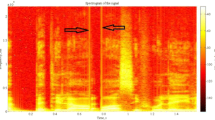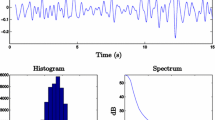
Overview
- Outlines historical milestones in the field of audio forensics
- Features practical examples and recommendations
- Discusses research issues and challenges
- Includes practical guidelines for expert reports and testimony
- Covers digital audio signal processing for audio interpretation, intelligibility enhancement, and evaluation of authenticity
Part of the book series: Modern Acoustics and Signal Processing (MASP)
Access this book
Tax calculation will be finalised at checkout
Other ways to access
About this book
This book provides an expert introduction to audio forensics, an essential specialty in modern forensic science, equipping readers with the fundamental background necessary to understand and participate in this exciting and important field of study. Modern audio forensic analysis combines skills in digital signal processing, the physics of sound propagation, acoustical phonetics, audio engineering, and many other fields. Scientists and engineers who work in the field of audio forensics are called upon to address issues of authenticity, quality enhancement, and signal interpretation for audio evidence that is important to a criminal law enforcement investigation, an accident investigation board, or an official civil inquiry.
Expertise in audio forensics has never been more important. In addition to routine recordings from emergency call centers and police radio dispatchers, inexpensive portable audio/video recording systems are now in widespread use. Forensic evidence from the scene of a civil or criminal incident increasingly involves dashboard recorders in police cars, vest-pocket personal recorders worn by law enforcement officers, smart phone recordings from bystanders, and security surveillance systems in public areas and businesses. Utilizing new research findings and both historical and contemporary casework examples, this book blends audio forensic theory and practice in an informative and readable manner suitable for any scientifically-literate reader. Extensive examples, supplementary material, and authoritative references are also included for those who are interested in delving deeper into the field.
Similar content being viewed by others
Keywords
Table of contents (11 chapters)
-
Front Matter
-
Back Matter
Authors and Affiliations
About the author
Dr. Rob Maher is a professor of Electrical and Computer Engineering at Montana State University-Bozeman. An experienced professional engineer, educator, and entrepreneur, his research and teaching interests are in the field of digital signal processing, with particular emphasis in digital audio, audio forensic analysis, digital music synthesis, and acoustics. He has written and lectured extensively in the field of audio engineering and also serves as an expert witness in civil and criminal cases.
Dr. Maher is a Fellow of the Audio Engineering Society, Senior Member of IEEE, Associate Member of the American Academy of Forensic Sciences, and a member of the Acoustical Society of America. He lives in Bozeman, Montana, where he enjoys spending his spare time as an amateur musician and trail runner.Bibliographic Information
Book Title: Principles of Forensic Audio Analysis
Authors: Robert C. Maher
Series Title: Modern Acoustics and Signal Processing
DOI: https://doi.org/10.1007/978-3-319-99453-6
Publisher: Springer Cham
eBook Packages: Physics and Astronomy, Physics and Astronomy (R0)
Copyright Information: Springer Nature Switzerland AG 2018
Hardcover ISBN: 978-3-319-99452-9Published: 15 November 2018
eBook ISBN: 978-3-319-99453-6Published: 07 November 2018
Series ISSN: 2364-4915
Series E-ISSN: 2364-4923
Edition Number: 1
Number of Pages: XV, 147
Number of Illustrations: 36 b/w illustrations, 57 illustrations in colour
Topics: Acoustics, Signal, Image and Speech Processing, Forensic Science, Engineering Acoustics, Criminal Law and Criminal Procedure Law, Civil Law



